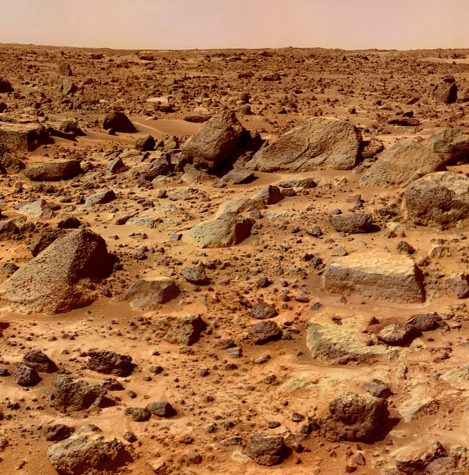The planet Mars has existed for more than four billion years, but it was not until July 4, 1997 that humans got a first look at the surface. Ever since, NASA and other space companies like SpaceX, have launched 22 satellite and rover missions to collect important information and scientific data to study the 4.6 billion year old planet. However, the issue is the logistics of getting humans to Mars and whether or not when humans get there if the scientific studies are worth it.
Science is the key to making the human race stay alive and safe each day. The evolution of science is changing dramatically day by day with improvements such as new medicines and new ways to produce crops to keep humans alive. It accumulates over the years with the improvement of technology. Technology has changed in personal iPhones, the internet, vehicles, and for companies as well. Although technology has changed the way people look at planets and the environment as a whole. It has also led to scientific studies that shouldn’t have been touched or discovered yet based on how it changes our future forever.

With major companies like NASA and SpaceX, money makes these companies run and well-known. These space programs have gone from sending actual people to a place to get data and statistics like the moon, to sending satellites and rovers to do a job that a human does not have the capability to do. But the thing that changed the way scientists get their research is through the use of the camera in order to get detailed information of the surface, rocks, caves and areas that used to have water and plant life.
NASA landed their new Perseverance Mars Rover on Feb. 18, 2021.. The rover took off last year on July 30, 2020 and took around six to seven months to finally reach Mars after drifting on course in space.
The rover has the ability to create energy by having a radioisotope thermoelectric power generator which uses plutonium-238 oxide to give off heat which produces energy. The new rover is equipped with aluminum wheels in order to move the rover across the rough terrain on the planet, but also has the ability to send a small helicopter to get a visual from above. When on the surface, the rover has two microphones, 19 cameras and multiple remote controlled arms that can pick up necessary items in order to take pictures and live video. Theoretically, this rover should take the job of a human based on the capability of doing the same, if not more than, a human. It shouldn’t even be an option to send humans to Mars when these companies have rovers and satellites around the planet 24/7.
After researching Mars for over two decades, the question still remains as to when humans are expected to land on the planet. The first four humans expected to launch to Mars will begin their mission in 2024 and are expected to arrive in the year 2025. If the mission is successful, every two years a new crew would arrive on the planet. The problem that remains is that the necessities to life on Mars are not the same on Earth. The threat that these humans face on Mars is like no other. The possibility of getting lost of course in space or when lifting off from Earth’s orbit and having a technical problem could cost not billions of dollars, but human lives. These four individuals that will be the first to step on Mars will never return to Earth. The individuals could ultimately experience an event that would ensure they could never communicate with Earth again.
Most water exists as ice and smaller quantities are vapor particles in the atmosphere. Most importantly, Mars does not have the atmosphere to withstand massive amounts of oxygen compared to Earth. So, if humans want to succeed with further life on Mars, they would have to live in artificial Mars habitats with complex life-support systems. This means that space companies would have to constantly send supplies such as water, food and other necessities to fulfill life on this unexplored planet.
If Mars does not support the necessity for human life and space, companies will have to spend billions of dollars for people to study a planet that will not bring improvements or advantages to earth; therefore, it is not worth the trouble. Ultimately it’s not worth it to have tax payers money, people’s personal money, people’s time or earth’s materials to send four people up there, when companies can have machines and satellites do the job for them. The only thing these space companies get out of this whole trip is saying America sent humans on Mars.






